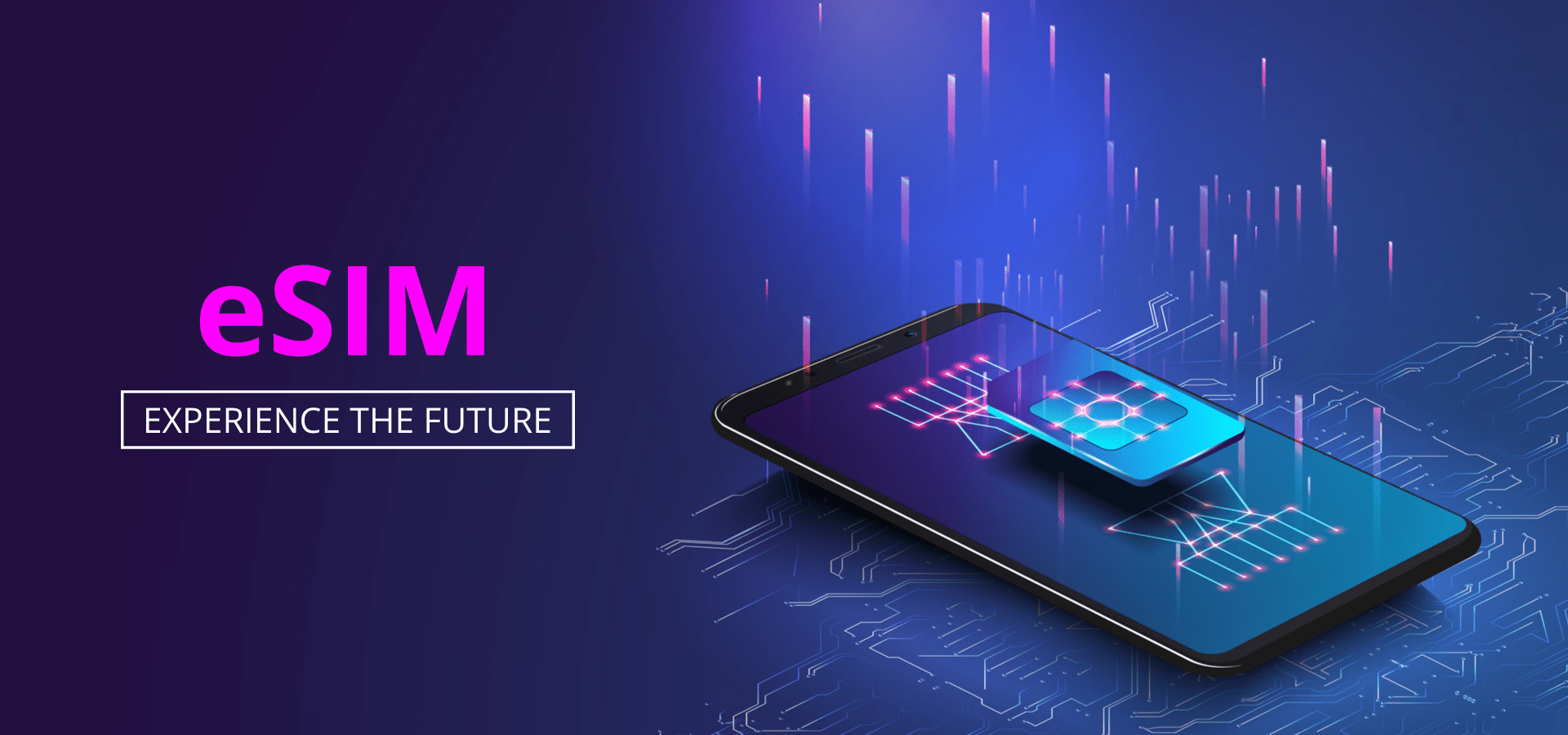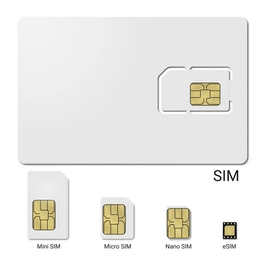
eSIM – The Future of Wireless Subscriptions
Table of Contents
SIM, eSIM, iSIM - What are these things?
As we move towards a more digitally integrated society the importance of miniaturization, efficiency, and reliability will continue to be crucial. We live in a world where reliability is more than just a key performance indicator. Customers demand almost zero downtime and always responsive products. Anything that negatively impacts a customer's journey with your company is expected to be mitigated.
Subscriber Identity Modules or SIM cards as we commonly call them, have been around since 1991. Initially created by Giesecke & Devrient and sold to a Finnish Wireless company. What started as a 300 card order is now a 7+ Billion device industry.
To get there we have had to make some changes over time moving from a SIM card that was the size of your standard bank or credit card all the way down to the Nano-SIM.

The nano-SIM was the last iteration that could be made based on physical limitations. We had cut away all of the plastic body of the card that we could. The physical SIM (pSIM) was at an end. A new means of connecting a device to a cellular network needed to be created. It still needed to be secure and provide authentication, authorization, and accounting for the use of the subscribed services.
eSIM has taken a similar route that a computer's CPU has over time. With space always a consideration on a computer platform the architects of a CPUs layer stack found ways to bring in other chips that existed on the motherboard in to one large platform. This is how we live in a world of devices with system-on-a-chip (SoC). CPU designer's have taken all of the major components that make a device operate and condensed them on to a single wafer or platform. You can see the prevalence of this in the mobile device category. Almost all devices operate with an SoC architecture, the iPhone 14 is the latest Apple device that leverages this thought process. I bring up the iPhone 14 for one very specific reason, Apple was the first to truly commit to eSIM as a method of business. Their US-based iPhone 14 series devices will only use eSIM.
This has a profound effect on not just mobile communication devices like the phones we carry every day but instead has a greater impact in the IoT space. I'll make sure I touch on that in a future post.
That is huge news and will push the industry as a whole to begin removing the pSIM tray from devices. This will be high-end mobile devices only at first but over time you can guarantee that budget-minded devices will also see the removal of the pSIM tray. eSIM itself is not a new concept, the standard was released in 2016, but it takes time to prepare the world for mass changes like what will begin to happen with SIMs. In fact, the first pSIMless mobile device was sold by Motorola in 2019. The Razr was the first to market but Motorola was a bit ahead of it's time on that endeavor and it did not sell as well as they had hoped.
Why eSIM? -The Good and Bad of eSIM
eSIM has many advantages and I'll list several of them while also playing devil's advocate, there are some drawbacks as well.
eSIM Advantages
- Multi-Profile Use - You can store profiles from multiple carriers on one device and turn them on/off as needed.
- Lack of physical card - You can't lose it or break it.
- Additional elemental protection - One less slot for dirt, dust and water to attempt to penetrate the device.
- Temporary network use - You can temporarily switch to a different network provider, especially while roaming.
- Quicker, easier activation - You no longer have to wait for a card to be mailed or go to a kiosk to buy a card. You can download an app, sign up for service and activate within minutes.
- Less space - I'll mention this again in a moment but you save space which means OEMs can increase battery size or add new features.
eSIM Disadvantages
- eSIM is not world-wide - eSIM network readiness is not something done overnight. I've helped launch this on a network and I know the work involved.
- Harder to prevent tracking - Some users will have privacy concerns since the SIM module itself cannot be removed.
- Not as easy to swap devices - Some users will not want an eSIM because they enjoy the ease of switching devices using a pSIM.
- Transfer of eSIM - Users will need to be acclimated to keeping data in the cloud. The loss or breaking of a device means you will need to restore your eSIM from the cloud and this could take some time.
- eSIM Cloud Hacking - There is a chance that eSIM data could be hacked from a cloud platform. It will be imperative that OEM's and service providers ensure their servers remain secure.
What's Next - eSIM and Beyond
Circling back on the SoC methodology that we see mobile device operating on, it is not too hard to imagine one day the SIM module simply does not exist. Well, at least not in the form we think of today. An eSIM is the SIM module, permanently soldered to the circuit board of a device. This is where we are heading today but do not be surprised if only a few years from now we are moving the SIM module on to the phone's processor itself. These modules are called Integrated Subscriber Identity Modules or iSIM.
The iSIM standard is the next and final evolution of subscriber identity modules. It will exist on the processor in a secure enclave some time in the near future. That may not seem like much but an eSIM takes up a 5mm x 6mm space on a device. The iSIM is less than 1 sq mm and on a microarchitectural level, that is huge. It will increase efficiency and latency from a network communication level.
If you enjoyed this content, please consider subscribing to get future updates!


Thank you for the information. helpped alot